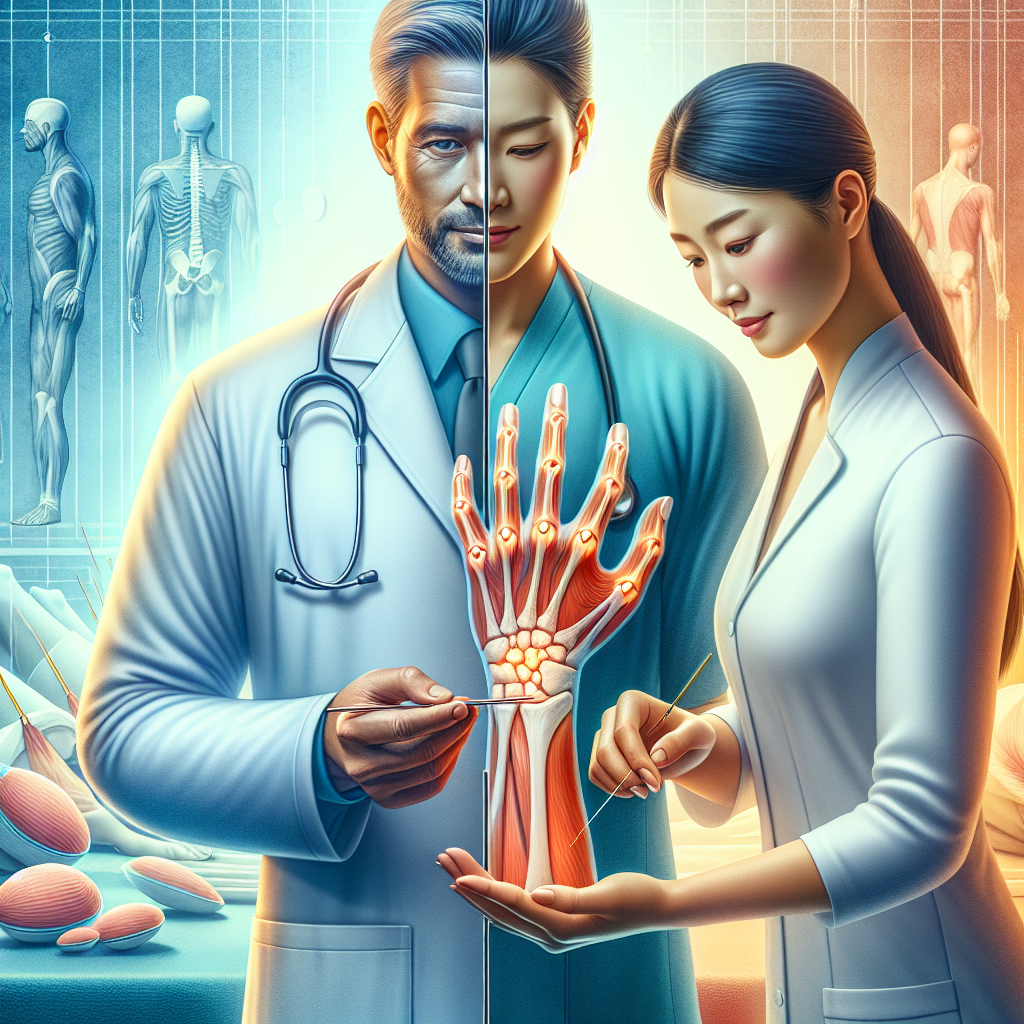Finding Relief: The Benefits of Combining Western Treatments with Eastern Healing Practices for Arthritis
Arthritis is a condition characterized by inflammation and pain in the joints, affecting millions of people worldwide. It encompasses over 100 different types, with osteoarthritis and rheumatoid arthritis being the most common. While Western medicine has developed a range of effective treatments to manage arthritis, Eastern healing practices also offer valuable techniques that can complement these methods. By combining the strengths of both Western and Eastern approaches, individuals suffering from arthritis can potentially experience enhanced relief and improved quality of life.
Western Treatments for Arthritis
Western medicine, grounded in scientific research and clinical trials, has created a robust framework for diagnosing and treating arthritis. The primary goals of Western treatments include reducing inflammation, relieving pain, and preventing further joint damage.
Medication
One of the cornerstones of Western arthritis treatment is medication. Nonsteroidal anti-inflammatory drugs (NSAIDs), such as ibuprofen and naproxen, are often prescribed to alleviate pain and reduce inflammation. For more severe cases, doctors might recommend corticosteroids or disease-modifying antirheumatic drugs (DMARDs), like methotrexate, which can slow the progression of rheumatoid arthritis by targeting the immune system.
Physical Therapy
Physical therapy plays a crucial role in managing arthritis. Therapists design personalized exercise regimens to strengthen the muscles surrounding the joints, improve flexibility, and reduce stiffness. Techniques may include stretching, resistance training, and low-impact aerobic exercises.
Surgery
For those with advanced arthritis, surgical interventions might be necessary. Procedures such as joint replacement (hip or knee replacements) can significantly enhance mobility and reduce pain. Arthroscopy, a minimally invasive surgery, can also be employed to repair damaged joint tissues.
Eastern Healing Practices for Arthritis
Eastern healing practices, rooted in holistic and traditional philosophies, offer a different perspective on managing arthritis. These approaches emphasize the balance and flow of energy, known as “Qi” in Traditional Chinese Medicine (TCM), and often incorporate natural remedies and lifestyle adjustments.
Acupuncture
Acupuncture, a key component of TCM, involves inserting thin needles into specific points on the body to restore the flow of Qi and alleviate pain. Studies have indicated that acupuncture can reduce arthritis pain and improve joint function by stimulating the release of endorphins and enhancing blood circulation.
Herbal Medicine
Eastern practitioners often prescribe herbal remedies to address the underlying causes of arthritis. Herbs such as turmeric, ginger, and willow bark have anti-inflammatory properties and can be used to create teas, tinctures, or topical applications. These natural remedies offer an alternative to pharmaceuticals and can be particularly beneficial for individuals seeking gentler treatment options.
Tai Chi and Yoga
Mind-body practices like Tai Chi and yoga are highly regarded in Eastern medicine for their ability to enhance physical and mental well-being. These disciplines combine gentle movements, deep breathing, and meditation to improve flexibility, balance, and strength. Regular practice can help arthritis patients reduce stiffness, increase range of motion, and manage stress, which can exacerbate symptoms.
Comparing and Contrasting Western and Eastern Approaches
While Western and Eastern treatments for arthritis share the common goal of alleviating pain and improving joint function, they differ significantly in their methodologies and underlying philosophies.
Diagnostic Approaches
Western medicine relies heavily on diagnostic tools such as X-rays, MRIs, and blood tests to identify the type and severity of arthritis. This scientific approach ensures accurate diagnosis and allows for targeted treatments. In contrast, Eastern practitioners may use pulse diagnosis, tongue examination, and patient history to assess the overall health and energy balance of the individual. This holistic approach considers the interconnectedness of body, mind, and spirit, offering a broader perspective on health.
Treatment Goals
The primary focus of Western treatments is often symptomatic relief and slowing disease progression. Medications and surgeries aim to directly address inflammation and joint damage, providing relatively quick results. Eastern practices, on the other hand, emphasize long-term wellness and balance. They seek to treat the root cause of the condition by restoring harmony within the body, which may result in gradual but sustainable improvements.
Side Effects and Risks
Western medications, while effective, can come with side effects such as gastrointestinal issues, organ damage, or immune suppression. Surgery also carries inherent risks, including infection and complications. Eastern treatments, particularly when using natural remedies and non-invasive techniques, tend to have fewer side effects. However, the efficacy of some Eastern practices may vary, and not all individuals may respond equally to these treatments.
The Benefits of Integrating Western and Eastern Practices
Combining Western and Eastern treatments can offer a comprehensive approach to managing arthritis, leveraging the strengths of both systems.
Enhanced Pain Management
By integrating acupuncture and herbal medicine with conventional pain relievers, patients can achieve more effective pain management. Acupuncture’s ability to stimulate the body’s natural painkillers can complement the immediate relief provided by NSAIDs, potentially reducing the need for higher doses of medication.
Holistic Wellness
Incorporating mind-body practices like Tai Chi and yoga into a Western treatment regimen can address both the physical and emotional aspects of arthritis. These practices encourage relaxation, mental clarity, and emotional balance, which can enhance overall well-being and improve the patient’s ability to cope with chronic pain.
Personalized Care
A combined approach allows for highly personalized treatment plans. By considering both the scientific data from Western diagnostics and the holistic insights from Eastern assessments, practitioners can tailor interventions to the unique needs of each individual. This blend of precision and personalization can lead to more effective and satisfactory outcomes.
Conclusion
Arthritis is a complex condition that requires a multifaceted approach to management. By integrating Western medical treatments with Eastern healing practices, individuals with arthritis can benefit from the strengths of both systems. Western medicine offers targeted, evidence-based interventions that provide quick relief and prevent joint damage, while Eastern practices contribute holistic, natural, and patient-centered care that promotes long-term wellness. Embracing this integrative approach can lead to enhanced pain management, improved joint function, and a better quality of life for arthritis patients worldwide.

